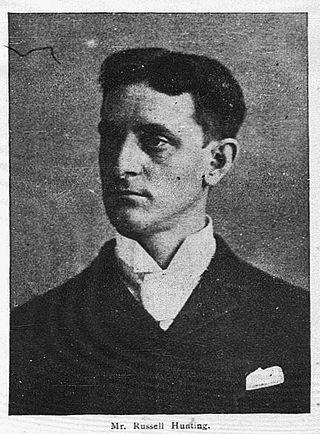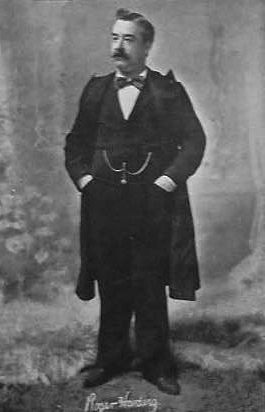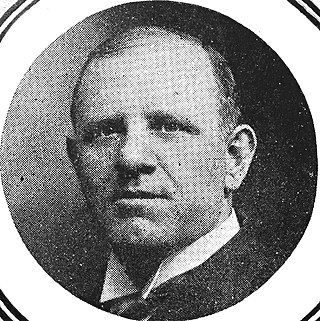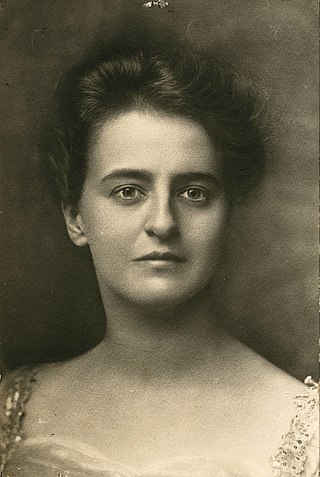
OKeh Records is an American record label founded by the Otto Heinemann Phonograph Corporation, a phonograph supplier established in 1916, which branched out into phonograph records in 1918. The name was spelled "OkeH" from the initials of Otto K. E. Heinemann but later changed to "OKeh". Since 1965, OKeh was a subsidiary of Epic Records, a subsidiary of Sony Music. Today, OKeh is a jazz imprint, distributed by Sony Masterworks.

Mamie Smith was an American singer. As a vaudeville singer, she performed in multiple styles, including jazz and blues. In 1920, she entered blues history as the first African-American artist to make vocal blues recordings. Willie "The Lion" Smith described the background of these recordings in his autobiography Music on My Mind (1964).
The Gramophone Company Limited , based in the United Kingdom and founded by Emil Berliner, was one of the early recording companies, the parent organisation for the His Master's Voice (HMV) label, and the European affiliate of the American Victor Talking Machine Company. Although the company merged with the Columbia Graphophone Company in 1931 to form Electric and Musical Industries Limited (EMI), its name "The Gramophone Company Limited" continued in the UK into the 1970s.

Charles Luckyth Roberts, better known as Luckey Roberts, was an American composer and stride pianist who worked in the jazz, ragtime, and blues styles. Roberts performed as musician, band/orchestra conductor, and dancer. He taught music and dance. He also owned a restaurant and bar in New York City and in Washington, D.C. Luckey Roberts noted compositions include "Junk Man Rag", "Moonlight Cocktail", "Pork and Beans" (1913), and "Railroad Blues".

Frederick Stock was a German conductor and composer, most famous for his 37-year tenure as music director of the Chicago Symphony Orchestra.
Classic female blues was an early form of blues music, popular in the 1920s. An amalgam of traditional folk blues and urban theater music, the style is also known as vaudeville blues. Classic blues were performed by female singers accompanied by pianists or small jazz ensembles and were the first blues to be recorded. Ma Rainey, Bessie Smith, Ethel Waters, and the other singers in this genre were instrumental in spreading the popularity of the blues.

Russell Dinsmore Hunting was an American comic entertainer, pioneer sound recordist, and an influential figure in the early years of the recorded music industry. He was described as "the most popular pre-1900 recording artist".

Edward Addison Favor, who was billed as Edward M. Favor or Ed. M. Favor, was an American vaudeville comedian, singer and musical theatre performer who was one of the most popular stars of the late nineteenth and early twentieth centuries.

Daniel William Quinn was one of the first American singers to become popular in the new medium of recorded music. Quinn was a very successful recording artist whose career spanned from 1892 to 1918. Quinn recorded many of his hits in the legendary Tin Pan Alley of New York City.

Perry Bradford was an American composer, songwriter, and vaudeville performer. His most notable songs included "Crazy Blues," "That Thing Called Love," and "You Can't Keep A Good Man Down." He was nicknamed "Mule" because of his stubbornness, and he is credited with finally persuading Okeh Records to work with Mamie Smith leading to her historic blues recording in 1920.

Frank C. Stanley was a popular American singer, banjoist and recording artist active in the 1890s and the 1900s.

William B. Shires, who performed and recorded as Billy Golden, was an American blackface comic, and singer who was a popular recording artist between the 1890s and the 1910s.
Walter Bowman Rogers was an American cornet player, concert band and orchestral conductor and composer, who was responsible for most of the orchestral arrangements on recordings made for the Victor Talking Machine Company between 1904 and 1916. He left the Victor Company when he accepted an equity partnership with the Paroquette recording company, a venture which ended when the company went into receivership. He accepted arranging, conducting positions with the Paramount and Emerson companies before he was offered an executive-level position by the Brunswick-Balke-Collander Company when the nationally known manufacturer of bowling, saloon, and phonograph cabinetry decided to expand its operations in the talking-machine industry by creating a line of phonograph recordings. Rogers became Brunswick’s director of classical-music releases, a role he held until shortly before the Brunswick phonograph division was acquired by the Warner Brothers film corporation in April 1930.
Robert Williams Ricketts was an American musician, composer, lyricist, bandleader, song arranger and music publisher. Bob Ricketts was associated with fellow musician and songwriter Porter Grainger and together they produced a number of musical works.

Charles D'Almaine was an American violinist with the New York Metropolitan Opera, a chiropractor, and a pioneer recording artist.

Julius Lenzberg was an American composer of ragtime and jazz of German descent. He recorded a substantial number of jazz pieces with orchestra between 1919 and 1922, in addition to ragtime music such as his popular Hungarian Rag of 1913.

Estella Louise Mann was an American singer, recording artist, and record executive active in New York in the 1890s. She was one of the first women to make a living as a recording artist, and the first woman to run a record company.

Roger Harding was an Irish-American singer, composer and music publisher active in the United States from 1890 to 1901.

Frederick E. Hylands was an American pianist, composer and publisher active 1887-1913.

Mary Hissem De Moss Lyon was an American concert and oratorio singer, based in New York, and known as the "Festival Soprano" for her many appearances at music festivals across the United States and Canada.
















